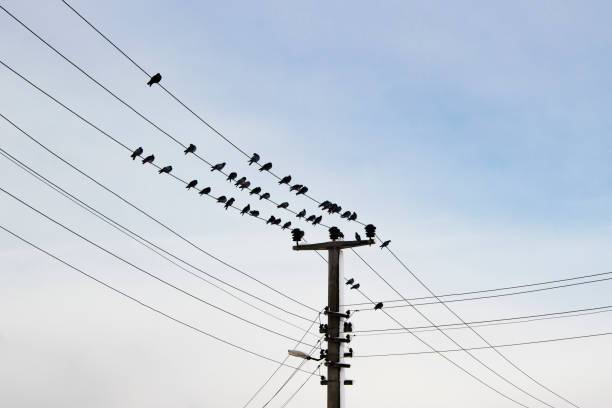KEEP BIRDS AWAY FROM POWER LINES WITH EFFECTIVE AND HUMANE METHODS!

KEEP BIRDS AWAY FROM POWER LINES WITH EFFECTIVE AND HUMANE METHODS!
SUMMARY
Birds gathering on power lines can lead to power outages, damage, and safety hazards. This guide outlines six humane strategies to deter birds from gathering on power lines and protect both the birds and your infrastructure.
FEATURES
- Install Bird Deterrent Spikes: Place spikes on power lines to prevent birds from perching.
- Use Optical Bird Gel: Apply gel to power lines to create an uncomfortable surface for birds.
- Hang Reflective Tape or Objects: Scare birds away with reflective materials near power lines.
- Install Bird Diverters: Use diverters to make power lines more visible to birds in flight.
- Introduce Audible Deterrents: Use sound-emitting devices to keep birds from gathering.
- Use Bird Wire Systems: Set up wire systems that discourage birds from landing on power lines.
GUIDE DESCRIPTION
Birds gathering on power lines can pose several challenges, from power outages to potential damage to the infrastructure. Additionally, when large numbers of birds gather on power lines, it can increase the risk of collisions and electrocution, both for the birds and for the equipment. Fortunately, there are several humane ways to deter birds from gathering on power lines while protecting both the birds and your electrical systems.
One effective solution is to install bird deterrent spikes on power lines. These spikes create an uneven surface that makes it difficult and uncomfortable for birds to land and perch. The spikes are humane and do not harm the birds, but simply make the power line an undesirable resting place. They are widely used in both urban and rural areas to prevent bird congregation.
Optical bird gel is another method used to deter birds. This gel, which is applied to power lines, emits ultraviolet light that birds can see but humans cannot. To birds, the lines appear to be on fire, which deters them from landing. The gel is non-toxic and does not harm birds or damage the power lines, but it creates an optical illusion that keeps birds away.
For a more visual deterrent, hanging reflective tape or objects near power lines can be highly effective. Birds are naturally disoriented by flashing lights and reflections, so adding reflective materials near the lines can scare them away. This solution is easy to implement and can be used in conjunction with other deterrent methods.
To reduce the likelihood of birds flying into power lines, bird diverters can be installed. These devices make power lines more visible to birds in flight, helping them avoid collisions. Bird diverters often come in bright colors and are designed to catch birds' attention as they approach the area, guiding them away from the lines.
Audible deterrents are another option for keeping birds from gathering on power lines. Sound-emitting devices, such as bird distress calls or ultrasonic noise, can be installed near power lines to create an environment that birds find unwelcoming. These sounds are designed to mimic predators or other danger signals, encouraging birds to steer clear.
Lastly, bird wire systems can be placed along power lines to prevent birds from landing. These systems consist of thin wires that are installed slightly above the surface of the power line, creating a barrier that birds cannot easily navigate. The wires do not cause harm but make it difficult for birds to perch, encouraging them to find another place to rest.
By implementing these humane bird deterrent strategies, you can protect your power lines from damage and prevent birds from gathering in hazardous areas. These solutions not only safeguard the electrical infrastructure but also contribute to the safety and well-being of the birds.
- Maanas Mehta


Comments 0